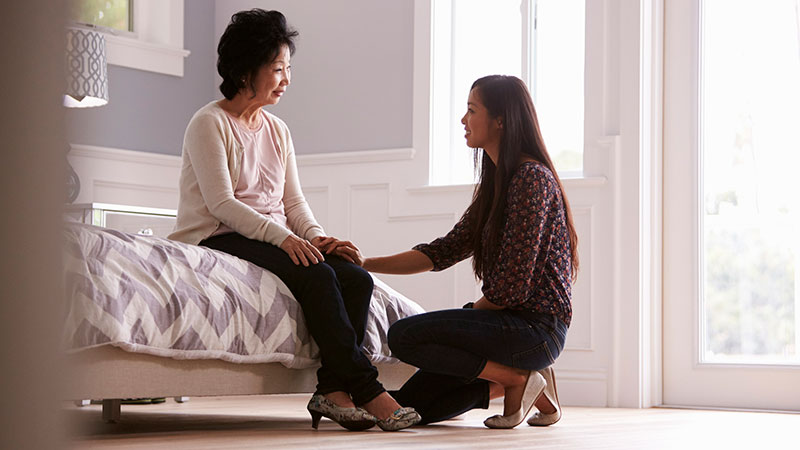Busy Caregivers Must Care for Themselves

When you are caring for a loved one with heart disease or someone recovering from a cardiac event, you may feel too busy to care for yourself. But caring for yourself is as important as caring for your loved one. Achieving balance can be the hardest part.
This is especially true when a sudden cardiac event occurs. As that person recovers and begins cardiac rehab, family members should begin to turn back to their other responsibilities. Feeling comfortable doing so — knowing when the emergency is passed — is often a challenge.
Work toward balance
Caregivers who focus solely on themselves may let others down, while those who just concentrate on the patient’s needs may neglect taking care of themselves.
Setting aside your own needs to focus on your loved one's needs is understandable. That’s a normal and expected reaction in the short-term when the shock of the cardiac event is still fresh. However, it is not a good strategy for you or for your loved one for caregiving over the weeks and months of recovery.
Fit in better nutrition
When you take on the additional role of caregiver for a loved one with heart disease or recovering from a cardiac event, it can be difficult to make time for healthy habits. You may overlook healthy eating and exercise, opting for convenience and processed foods. Over time, the poor nutritional value, excess sodium and added sugars of these foods can have serious health implications for you and your family members, especially children.
Here are some tips on managing and modeling healthy habits for the whole family:
- Learning heart health. When you are “food literate,” you understand the nutritional value of what you’re preparing, serving and eating. This involves, in part, learning to read and understand nutrition labels and ingredients.
- Teaching heart health. When children become accustomed to eating foods that are high in salt and added sugars, they are at risk of developing lifetime taste preferences that can lead to poor diets and poor health. Many parents are often hard-pressed for time to prepare nutritious meals, but there are resources, including these recipes, that offer tips on preparing quick meals that are lower in salt and sugars.
- Developing heart health. Developing better eating habits is often a step-by-step exploration of new foods and recipes. This can be achieved by gradually introducing healthier foods and drinks. Experiment to find healthy foods your family enjoys.
- Modeling heart health. Children learn from behavior modeled for them. When parents adopt healthier habits, they are encouraging their children to do the same. If your family’s diet is heavy on potato chips and light on veggies, start making the switch. Offer crispy raw vegetables instead of processed snacks. If you all guzzle soda, cut back to a small amount each week and gradually limit it altogether or keep it as a treat for a special occasion.
Make time for physical activity
Finding time to fit in physical activity can feel daunting but it should be a priority. Getting as little as 30 minutes of exercise a day, such as brisk walking, can reduce your risk of heart disease and stroke.
Pace yourself to conserve your energy
Balance taking care of your loved one with taking care of yourself. Neglecting your own needs may lead to burnout, meaning you won’t be able provide the kind of loving care over the long term that you intend.
Take these steps can help you take care of yourself and your loved one:
- Learn about the nature of your loved one’s condition, its treatments and the estimated timeline for recovery.
- Think about what you can realistically do for your loved one. Also begin reflecting on what might be too much for you over time, such as staying home from work.
- Be open to new technologies and ideas that promote your loved one’s independence and make your job easier.
- Start assembling a support team to help with caregiving duties, such as meal preparation, household chores and driving to medical appointments.
- Reach out. Find someone you can talk to about your fears and doubts. Make sure this person can give you reassurance and emotional support.
- Seek support from other caregivers. There is great strength in knowing that you are not alone.
Caregivers often experience personal and spiritual growth through the caregiving process. They learn about their own resilience, competence and capacity for self-sacrifice.





